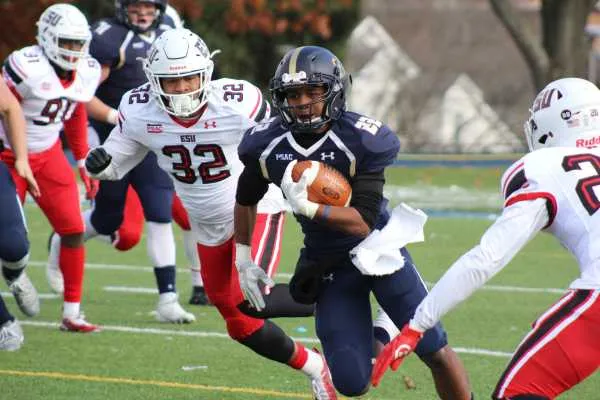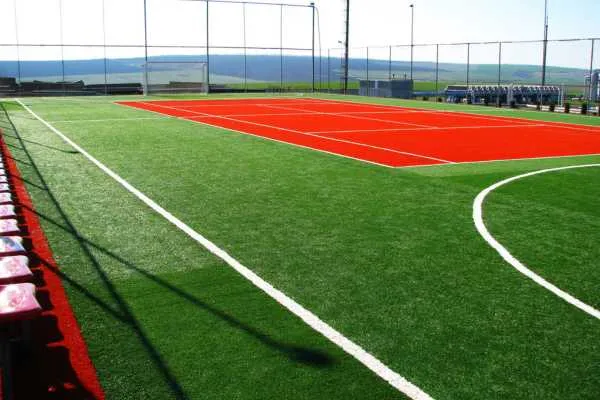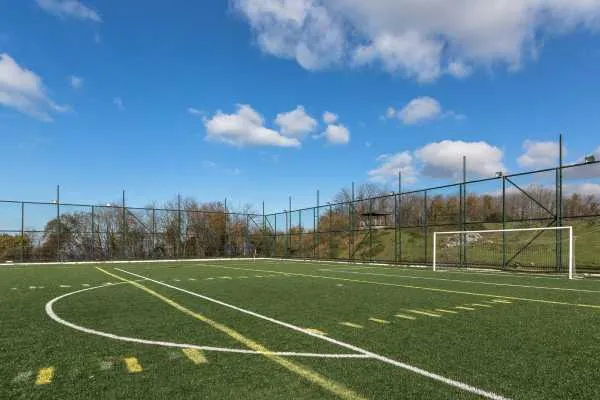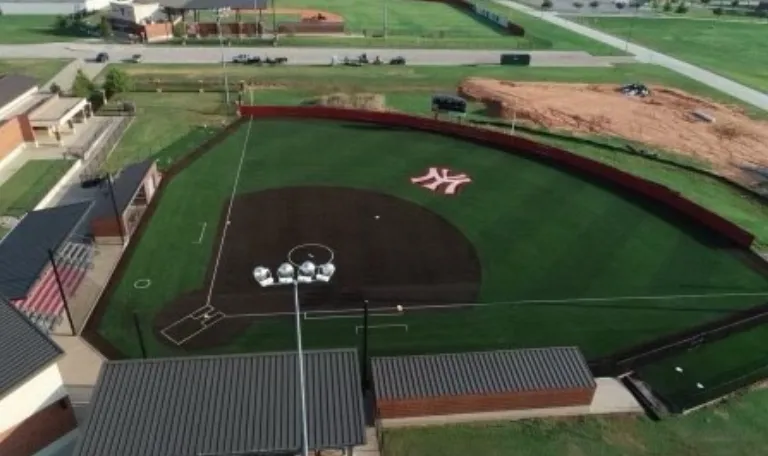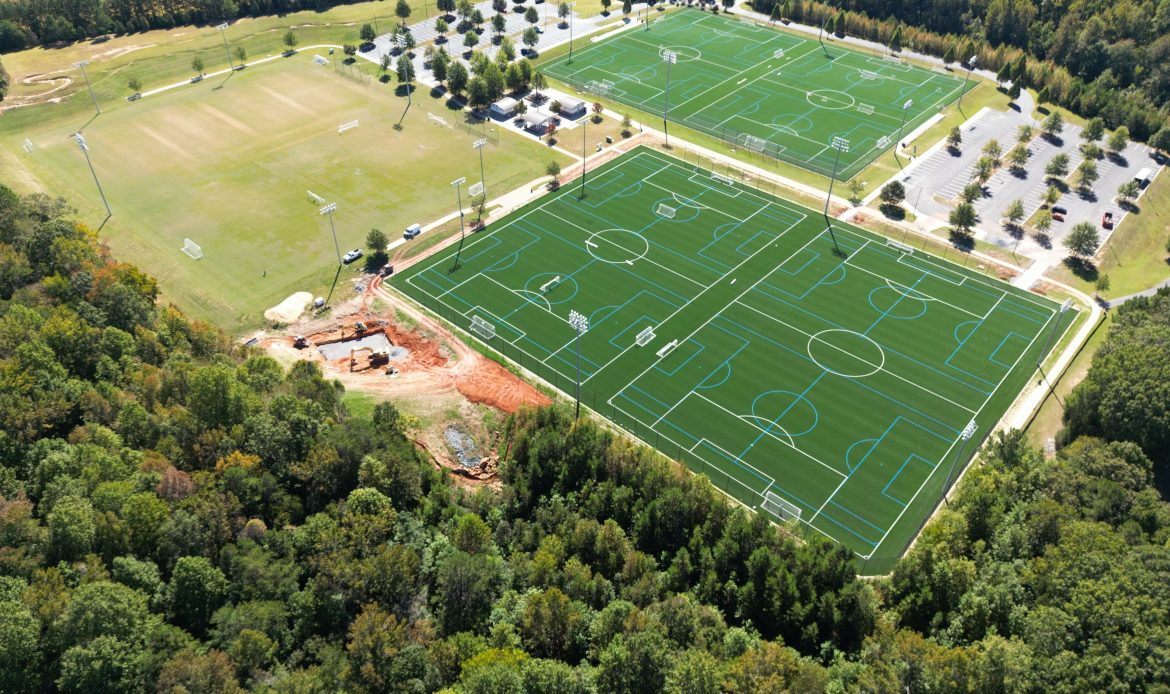Synthetic fields do not require as much water as natural grass, do not require fertilizer or pesticides and do not need to be mowed, which means you won’t be using as much gas. The field itself is made of plastic fibers – petroleum-based, yes, but increasingly recycled – so overall, synthetic fields have a smaller footprint.
Turf fields do retain heat more than natural grass. On hot days, the playing surface – and, therefore, the players – may be hotter than they would be on an adjacent grass field. However, the extra heat will probably not be significant compared to the overall conditions. Even so, this is something the coaches and athletic trainers should be aware of as they plan water breaks and cooling systems (like fans and misters), and educate the athletes on heat safety.
Artificial surfaces and the infill granules are a combination of cork, rubber and synthetic materials, so they should not be ingested. Keeping toddlers, infants and pets off the surface should minimize this risk (and is better for the overall condition of the field).

